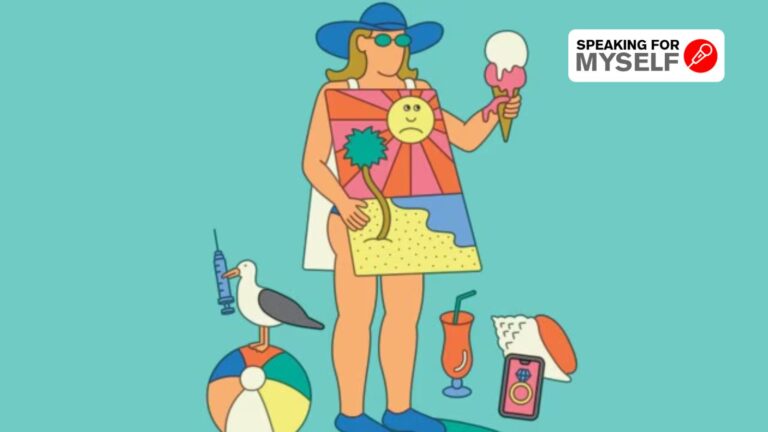From “Hot Girl Summer,” “It Girl,” “That Girl,” “Clean Girl,” and “Coquette,” we are now in for “Brat Summer,” and I am so grateful for that.
Charli XCX, the lead singer on the album “BRAT,” describes her image of a “brat” as “a girl who’s a little bit messy, likes to party, and sometimes says stupid things” with “a pack of cigarettes, a Bic lighter, no bra, and a strappy white top.”
First, let’s take a step back. The Internet is a sophisticated The ideal personality that women shape themselves into, It’s disguised as a glamorous aesthetic and turned into pop culture that many women internalize, and I’m so tired of it. The irony is that every few months, some apparently new, curated, superficial personality uses hashtags and “trends” to tell me that this is the way to be my most fun, confident, authentic self.
The “Hot Girl” wears sexy clothes and attends parties and concerts. The “It Girl” wears classy and chic clothes. The “That Girl” meal preps, goes to the gym or pilates, journals, and eats healthy. But sometimes she wants to gorg on pizza, then eats a box of ice cream right after. She’s too bloated for a mini bodycon dress, so she wears comfy sweatpants.
Lately, I’ve been trying to be a “coquette” and am a hardcore girlie in the style of Lana Del Rey, so I’ve been spending a lot of money on pearls, florals, lace, ribbons and pastel-colored clothes. But that’s not enough. To truly embody my aesthetic, I also need to visit art galleries, museums and cute cafes. I wish I had time to enjoy such elaborate leisure activities every day in this fierce competitive and capitalist race.

And I was never one to strive to be a “clean girl.” My acne-prone skin and curly hair that was often deemed unkempt never looked good with Hailey Bieber’s glossy makeup and neatly pulled back bun.
Regardless of personality or era, the women embodying these trends all looked perfect and put together, and my messy life felt like it didn’t fit into any box. With “Brat Summer,” I was able to be my most real, raunchy, and unapologetically self. It was so comforting to see Charli admit that she’s “messy,” too. Brat Summer acknowledges the fact that life isn’t always rosy and that we choose to have fun no matter what.

In “I think about it all the time,” Charli expresses her fears and anxieties about the future, especially motherhood, and in “Club classics,” she sings, “I’m gonna dance all night long.” It’s a perfectly balanced, realistic yet hedonistic philosophy that really resonates with me.
The beauty of the wayward character is in the freedom it embodies. All we know is her partying and facing existential fears; the rest of her story is up to you to make up. This aesthetic is unique in that it adapts to you, rather than you adapting to it. As Charlie so eloquently put it, “Love it or hate it/I don’t give a damn what you think.”
What was so disturbing to me about these ever-changing digital archetypes, beyond the hyper-consumption they incited, was that they felt deeply performative. It was like I was starring in The Truman Show myself; the camera was on me the whole time and I had to perform well. The very name It Girl or That Girl suggests that the premise of this persona is to be the center of attention and to be talked about. Even more disturbingly, the performance caters to and pleases not anyone, but a specific entity: the male gaze.
Hot girls are sex symbols, It girls are unique and better than anyone else, That girls have the ideal body for their fitness, Clean girls wear minimal, natural makeup because men don’t like heavy makeup on women, and Coquette girls (literally defined as “frivolous women”) have a virginal innocence that men truly value. While all of these personalities are heavily influenced by the music industry and vice versa (think Megan Thee Stallion’s “Hot Girl Summer” and Aaliyah’s interlude “IT Girl”), BRAT is the first to introduce a metaphor far removed from men and sex. As The Guardian points out, it’s a breath of fresh air that passes the Bechdel test (two women having a conversation about something other than men).
The emergence of “brat summer” coincides with the trend towards ugly fashion, both in time and concept: the combination of different aesthetics and disparate elements in deliberately unattractive outfits.
So, if I were to wear a long white skirt from my coquette days with a shirt from my “it” days, I’d look good. Perhaps this trend towards tacky fashion is popular precisely because it rebels against traditional standards of beauty, embracing a comfort and confidence that rejects conventional attractiveness, and escaping the terrifying and insecure male gaze.
This is the commodification of female identity, an inherent problem with the trope of women in the first place, and Brat Summer is no exception. The internet diminishes women’s individuality by promoting a single narrative, ignoring the wide range of experiences and expressions that women embody, and making the representation of women in media and online spaces sadly shallow.
The metaphor of the “brat”, with its emphasis on partying and rebellion, may not be relatable or accessible to everyone and perpetuates a sense of exclusive freedom, so it is essential that the metaphor only connects to the idea and the ethos, and not its accessories.
If Truman could see that his life and identity were defined by the gaze, so can we. Brat Summer is a way to escape the relentless waves of waking up as yet another false perfect person, to satisfy the male gaze in another way. For the first time in a long time, I choose to be “a little crazy, a little wild, a little free.”
The author is a Political Science student from Ashoka University and is currently an intern at The Indian Express.

